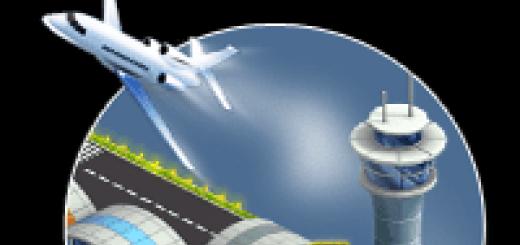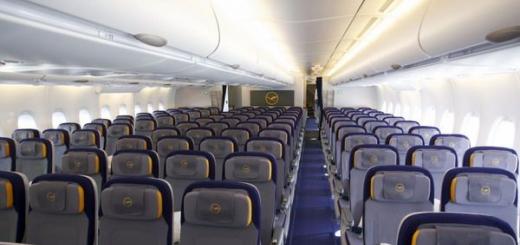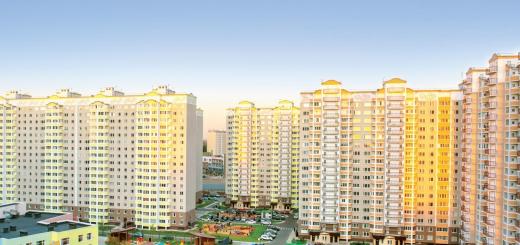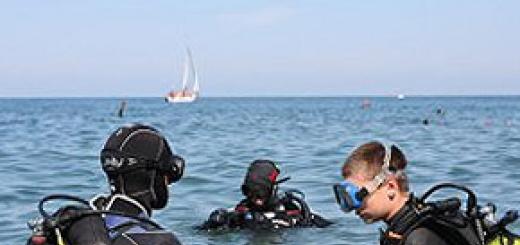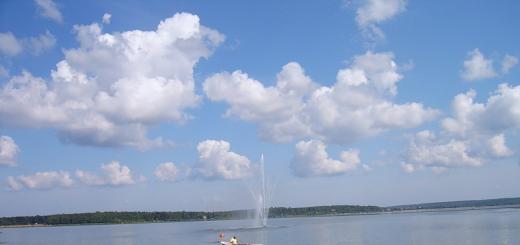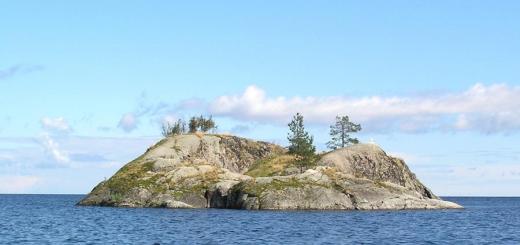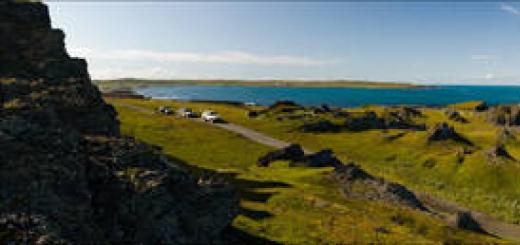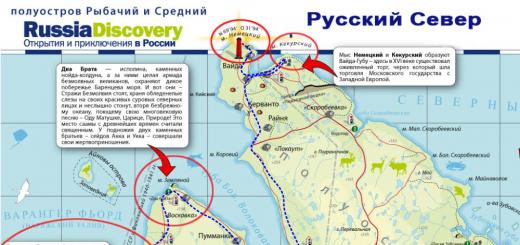And the administrative center of the province of the same name. Geographically, the city is located in the northeastern part of the island. Nearby is the airport named after the popular resort Costa Smeralda. This airport receives flights mainly from cities in Italy. The patron saint of Olbia is considered the first bishop of the city of Saint Simplicius. The official holiday in his honor is celebrated on May 15th.
The history of this settlement goes back more than one millennium. BC, the area was inhabited by the Nuragi tribe. Then the Phoenicians conquered the territory. They also founded the first port in Olbia. The Romans, the Punas, the Carthaginians, and even the Greeks have also been here. The name of the city comes precisely from the Greek word Olbiòs - "happy". However, the Sardinians themselves call him Terranova - “ new earth". Thanks to the convenient geographic location Olbia has always attracted many travelers and was one of the richest cities in Sardinia. This is evidenced by the ruins of ancient necropolises, aqueducts, Romanesque baths and other public buildings.
Today Olbia is especially attractive for tourists due to its close proximity to the resorts of Porto Cervo and Porto Rotondo, which are part of the Costa Smeralda's Emerald Coast. This coastline is the most exclusive and glamorous part of Sardinia. You can get to it from Olbia in just 20-25 minutes by car. Other interesting places for tourists are located 30 km from the city in San Teodoro and Budoni. These places are famous picturesque beaches and the purity of nature.
Olbia's beaches are of unprecedented beauty. Unique rocky landscapes and sandy shores open up here. Sometimes there are beaches with coarse sand interspersed with shells. For example, Murta Maria is a popular surfer destination. Small White sand with crystal clear waters can be found on the Punta Corallina beach. And, of course, for lovers of luxury and luxury rest Porto Rotondo beach is nearby.
The city's main attractions include the granite church of San Simplicio, built in the 12th century, the Cathedral of St. Paul, built in the 17th century, and the Archaeological Museum, which reveals the secrets of the Nuraghe. Olbia is also interesting boat trips... Here you can see the sheer, majestic cliffs of the Tavolara Island, the La Maddalena archipelago, declared a National Park for its rich flora and fauna, the Caprera Island with the Giuseppe Garibaldi House-Museum, and the Budelli Island with a unique pink beach.
Founded: bronze age
Square: 376.10 km 2
Population: 60,345 people (2018])
Currency: Euro
Language: Italian
Of.site: http://www.comune.olbia.ss.it
Current time in Olbia:
(UTC +1)
In addition to beach holiday and sightseeing, Olbia's nightlife and wide selection of boutiques and restaurants attract many tourists. Perhaps the most popular places for shopping are Piazza Regina Margarita and the adjacent street Corso Umberto. It is always crowded here, as this part of the city is the center of cafes, restaurants and shops. The most popular dishes in Olbia are seafood and shellfish dishes. However, there are many trattorias on the streets of the city. Center nightlife Regina Margarita square is also considered. Here you can dance, listen to live music, and taste local cocktails.
- one of the most popular resorts Italy. This is a kind of "gateway" to the island of Sardinia, because it is here that there is a large port, where ferries arrive from all over the Italian coast, and an international airport that accepts direct flights from European capitals and numerous charters at rush tourist season... Olbia is the administrative center of the small province of Olbia-Tempio, which is located at the northeastern tip of the island and washed by Tyrrhenian Sea... It is, in fact, part of Mediterranean Sea between mainland Italy and Corsica, Sardinia, Sicily.
Video: Olbia
The local climate is very favorable for the development of the recreational industry, because from May until late autumn the sun warms up the air and water to comfortable indicators for the beach - at the peak of the season the temperature is 28-30 ° C, and precipitation is rare and short-lived. Fresh sea winds allow vacationers not to suffer from exhausting heat. By the way, they also attract fans of windsurfing and classic wave riding to Olbia.
If your main goal is excursion travel and you want to avoid crowds of people, it is recommended to plan your trip in November, December or February. There are significantly fewer tourists at this time, and winters in Olbia are usually mild, the thermometer rarely drops below +6 ° C at night, and +15 ° C and above are considered the norm during the day.

It goes without saying that such a wonderful piece of land in every respect has attracted people since prehistoric times. For several millennia in Olbia, the mysterious Nuragic tribes (scientists still argue even about whether they were Indo-Europeans), Phoenicians, Punas, Romans, Carthaginians, Greeks replaced each other in Olbia. The latter, by the way, left in memory the modern name of the settlement, in translation Olbios means “happy”. Archaeological excavations at the site of ancient burials, sacral structures, aqueducts, baths and other buildings for various purposes are evidence of the rich history.
What to see in Olbia and the surrounding area
After Rome or Florence, the historical part of the spa town is unlikely to be able to impress you. But central square- Regina Margarita's piazzo has retained its original medieval appearance to this day.
Among other attractions, the Church of San Simplicio is certainly mentioned, traditionally dating back to the XII century, although historians claim that it began to be built in the XI century. The parish is named in honor of the first bishop of Olbia and its spiritual patron, Saint Simplicius, whose memory is celebrated annually on 15 May. A simple and even somewhat austere granite structure has no architectural delights and, quite in the spirit of its time, looks like a military stronghold. The true purpose is given only by the bell towering to the right of the entrance. The interior decoration is as minimalistic as the exterior.
St. Paul's Cathedral in Olbia was built much later, in the 17th century. It is believed that this site was previously the site of a Punic temple in honor of Jupiter's son, Hercules. The town hall and city library of Simplician are quite young against their background, they date back to the 19th century.
If tourists are mainly interested in antiquities, then the Fausto noche park is a favorite recreation place for the indigenous inhabitants of Olbia. Green Zone, spread over an area of 16 hectares, is the largest not only in this province, but on the entire island.
National Archaeological Museum open to visitors every day, except Monday and Tuesday, and is completely free. It has a rich exposition due to the ongoing excavation of ancient monuments material culture bygone eras. By the way, research sites can also be visited. Perhaps the most interesting are the intriguing nuraghes, which have been standing for not the first millennium without any foundation, being held by the balance of the mass of huge stone blocks, folded in the shape of a truncated cone. The so-called "tombs of the giants" are also impressive, for example, Su Monte de S "Abe. In Olbia, the Phoenician fortress wall and Roman baths are also accessible to the inquisitive eye.
The La Maddalena archipelago, consisting of 62 large and very tiny islets, has been declared a national reserve. Here travelers have a unique opportunity to dive into the sea with scuba diving and observe the behavior of dolphins and turtles in their natural habitat. In underwater caves located at a depth of 40 meters, it is easy to see exotic fish, octopuses, moray eels, sea urchins and lobsters. There is a regular ferry from the port of Palau to the "main" island, the journey on which will take only 20 minutes. There is also the option of hiring a private carrier to take in the beauty of the area along the way. Please note that Italian and American military bases are located on La Maddalena due to its strategically convenient deployment. To avoid misunderstandings and conflict situations, do not photograph people in uniform, their equipment and infrastructure.
If you are planning to explore other islands, do not ignore the remote from the coast of Sardinia Budelli. Here is the world famous Pink Beach, which got its name for the special shade of sand that particles of coral give it. Unfortunately, it will not be possible to sunbathe on it today - in order to preserve unique nature the authorities were forced to deny access to tourists, but even the panorama from the side of the pleasure boat is impressive. You can soak up the gentle southern sun on the islands of Spargi, Santa Maria, Caprera. The latter is also known as the last resting place of the famous Italian revolutionary Giuseppe Garibaldi.


Passive recreation and water sports
In Olbia, there are several modern and refined beaches at once, which are perfect for a pleasant pastime for both married couples with children and companies of young people. The most popular of them is Pittulongu, which can be easily reached by public transport or a rented car (in the latter case, the guest will undoubtedly appreciate free parking). It is pleasant not only to sunbathe here, but also to collect unusual shells, generously scattered among the snow-white sand. Active lifestyle adherents choose it for the opportunity to rent a canoe or go windsurfing.
Fans of the latter, however, often prefer the rocky Porto Istana, where there are as suitable natural conditions and equipment rental stations. Nearby there are places where you can replenish the calories spent during exercise.
Even more family cafes and pizzerias nestle near Bados, which is usually reached by commuter train or a rented car. There are almost no noisy aqua scooters and other water transport, so nothing will disturb your peace of mind while swimming and relaxing in a sun lounger.
Due to their relative remoteness, Punta Corallina and Le Saline are not crowded, and this may appeal to vacationers who value personal space. In addition, the second one "catches" excellent waves, so surfers coming to Olbia, regardless of their skill level, should definitely look at it.
Restaurants and local cuisine
It is Olbia, unlike most of the "star" resorts of the Emerald Coast, which is famous for the abundance of cozy restaurants, where preference is given not to fashionable variations on the theme of Italian cuisine, but to the centuries-old traditions of Sardinia. Since the city is located on the coast, it is natural that fish and seafood are widely represented on the menu. All of them are fresh, which means they are extremely tasty. We recommend trying the traditional seafood fregula pasta or the more common scallop spaghetti. Gourmets advise ordering, in addition to the latter, grated bottarga (dried mullet or tuna caviar in a special way).
However, the owners of trattorias will also find something to treat ardent fans of meat with. What is even a whole roasted Pulceddu pig or seasoned sausages with a pronounced taste, which in past centuries were prepared for shepherds who were away from home for a long time.
Snails and sea urchins are eaten in Sardinia, but these are rather exotic delicacies. If you want something simpler, pay attention to small pies with a variety of fillings, they are called empanadas, in the Spanish manner. The local "musical" bread is famous throughout Italy. Thin and crunchy carazau sheets can be tasted both in restaurants and in small shops or street vendors.
This land is also rich in unusual cheeses that go well with island wines. Even the famous Gallur soup is made with fresh cheese from cow's milk. For dessert in Olbia, cheese is also served: it is baked in bran flour dough and poured with honey when serving. The so-called seadas are delicious and are the main treat on the menu.
Tourist infrastructure
In fact, the city is adjacent to the famous Emerald Coast. The Costa Smeralda, which was jointly created in the middle of the last century by enterprising businessmen and talented architects, attracts guests with magnificent sandy beaches, spectacular seascapes, a wide range of comfortable hotels and upscale yacht marinas. The main category of vacationers in Porto Rotondo, Porto Cirvo, Pantochia and Cala Granu are more than wealthy people. Olbia looks quite democratic against the background of its neighbors.
Experts do not for nothing call the city the most developed in the northern part of the island. It is Terranova (as the Sardinians themselves call Olbia) that boasts the best catering establishments, boutiques and interesting bars. Corso Umberto street, in the immediate vicinity of historic center, opens the eyes of travelers to a rich palette of fashionable shops and cozy restaurants.
Most hotels in Olbia have three or four stars and offer their guests a decent level of service and pleasant bonuses in the form of their own gyms and spa centers, where you can spend time with health and beauty benefits. If you want to compare all the available beaches, shuttle buses running along the coast are at your service.
For those who prefer maximum freedom of movement, it will be useful to know that you can rent a car right at the airport, although there is also competition in this type of business and this rental point is far from the only one. The city streets and expressways outside the settlement are in excellent condition, so you will enjoy driving along them.
Special offers for hotels in Olbia
How to get there
Olbia is located a few kilometers from the international airport. There are regular buses running from the terminal, but many people prefer to take a taxi or rent a car. If Sardinia is part of a trip to Italy, you can land on one of the many ferries. This option makes it possible to enjoy wonderful landscapes along the way, because natural beauty the coastline is one of the main assets of Olbia!
Low Price Calendar
in contact with facebook twitter
Perhaps this large and somewhat chaotic city, which is considered the "main port" of the whole of Sardinia, is not the best place for a comfortable and relaxing stay. After all, Olbia accepts most of the ferries from mainland Italy, and its albeit small, but international Airport- "the lion's share" of aircraft with tourists. However, there are several charming places here, for example, the bustling Piazza Regina Margherita, which still retains the charm of the Middle Ages, or the adjacent Corso Umberto street, which attracts travelers with an abundance of shops and cozy restaurants.
In addition, Olbia, although not the most beautiful in terms of the historical part or the coast, is considered the most developed corner of northern Sardinia in terms of infrastructure. This is where the best restaurants, cute bars and pubs are located, as well as many shops and entertainment. It's not that you can't find this in other Costa Smeralda resorts, it's just that there is a choice - and that says it all.
How to get to Olbia
Olbia's Aeroporto di Costa Smeralda International Airport is located 5 km south of the city center and receives a ton of flights from all major cities Italy, and in the season - and charters from Russia and the CIS countries. You can get there by buses No. 2 and 10, or by private bus No. 3. The fare is low, however, if you do not like shaking in public transport, you should rent a car, since there is a rental office at the airport.
Trenitalia trains connect Olbia with Cagliari (16-23 EUR, travel time 4 hours), however, you will have to make one (or even two - also in Macomer) change in Chilivani. In addition, trains run to Sassari (6-9 EUR, en route 1 hour 44 minutes, three departures per day) and Golfo Aranci (1-2 EUR, 25 minutes, seven trains daily). The main railway station runs parallel to Via Gabriele d'Annunzio. Prices on the page are for September 2018.
In addition, due to its status as the "main port" of the island, Olbia wants or does not want to, but receives daily ferries from Genoa, Civitavecchia and Livorno.
Find Flights to Olbia
Transport
The Holiday Car Rental Office (tel: 0789 2 84 96; address: Via Genova 71) will gladly provide you with a nice Fiat Punto for about 55-60 EUR per day. In total, there are more than 15 rental-a-car offices in the city, so it will not be difficult to find the best offer in terms of price and quality. Traveling by car in and around Olbia is a pleasure. Remember the city's main thoroughfare - Corso Vittorio Veneto, other important arteries that lie perpendicular to it - Via Imperia, Via Sassari and Via G. Mameli ... Finally, you will have the chance to drive along the parallel main street of Corso Vittorio Veneto - Via Barcellona. If you are planning to travel outside the city, the most comfortable and safest route will be SS131 - the highway that runs around the entire island, along the coast.
Distances in the city are short, so you can travel on your own, or use the services of buses and taxis. These modes of transport in Olbia are inexpensive and comfortable.
The weather in Olbia
The best time to visit Olbia for sightseeing purposes is September, February and Christmas December. To enjoy the sun and warm sea- from May to October, when the temperature is around + 25 ° C ... + 30 ° C.
Popular hotels in Olbia
Cuisine and restaurants
Since Olbia is a city on the coast, all local restaurants and cafes offer an abundance of sea creeps on their menu. But meat is also "in favor" here. It is worth trying the traditional piece of pork Da Gimmy and washed down with the local Officina Del Gusto wine. Of course, Italian cuisine cannot imagine itself without pasta, the highlight of pasta in Olbia are sauces - hand-made according to old recipes. We also recommend trying the local lobster, which is listed on the menu as Lobster Catalan Style (the best place where it is prepared, according to the assurances of the locals, is the Le Caravella restaurant).
Already familiar to us, Corso Umberto (see introduction) is the best place for a pleasant dinner or an invigorating breakfast. Here it is worth looking into Shergan or Terra Sarda, where national dishes are prepared. And also in Ristorante Gallura - a small and very cozy restaurant, the "hit" of which is polenta with saffron sauce. Fish is also excellent here, but be prepared to pay at least 35-40 EUR for the main course.
Olbia beaches
Olbia has several pretty beaches, albeit not as luxurious and picturesque as further in the Costa Smeralda, but modernly equipped with everything that both family tourists and active young people need.
The most popular beach is Pittulongu with white sand and a large collection of all kinds of shells in it. Nestled comfortably along the crescent-shaped coastline, it is famous for its excellent restaurants and is easily accessible by public transport (address: Strada Provincale 82). Here you can go sailing and windsurfing (lessons are offered), canoeing and aqua scooter. Free parking- another plus of this beach.
Situated along the Golgo Aranci, Bados Beach is easy to reach by train in 25 minutes, or by car on the SP82 road. This is the most family-friendly and calm beach, there is also active entertainment on the water, but for the most part tourists come here just to swim and sunbathe. The abundance of pizzerias, restaurants and great hotels is the advantage of this place.
Porto Istana consists of four small beaches separated from each other by picturesque rock formations. It is opposite the Tavolara Marine area and offers excellent conditions for windsurfing enthusiasts. Large parking for a small fee, several equipment rental stations, as well as cafes and a couple of restaurants available.
Finally, you can go to Le Saline beach, which is located on the Strada Statale road and attracts lovers big waves and surfers; or Punta Corallina beach (on the road to Siniscola, SS125 state road), divided into two sections by a large gray rock.
Guides in Olbia
Olbia entertainment and attractions
Yet Olbia has a lot to see. In particular, there are many old buildings, churches or - the "highlight" of the town - archaeological excavations that tell about the rich history of this area in ancient times: nuraghe and "graves of giants". The finds made there can be seen in the luxurious Archaeological Museum.
The Punic necropolis, ancient city walls and Roman baths are also classified as “antiquities”. Of the "medieval" attractions, the Romanesque granite church San Simplicio is notable. The 17th century was marked by the charming St. Paul's Cathedral.
In the vicinity, it is worth seeing the Kabu Abbas Nuraghe, the Su Monte and S'Abe burial ground, the Sa Testa spring and the most beautiful Maddalena archipelago (now - national park). The archipelago consists of several large and small islands, but it is worth visiting at least one - Budelli (famous for its pink beach).
Sardinia island and trip to Olbia city for 3 days. The most interesting sights, the nearest beaches and a hike to the nuraghu.
Let's start by tradition with the organizational component of any vacation or travel. This is information about how to get there, where to stay and how to use public transport.
How to get to the city of Olbia
- : the easiest and cheapest way is city buses 2 and 10 for 1 €, which take only 5-10 minutes to get to the city center. A taxi costs a fixed 15 €, but it is also possible with a meeting at the airport for 30-40 €.
- : From the capital of Sardinia, the best way to get to Olbia is by train. The ticket costs 18 € and is sold without extra charges on the Russian-language website.
Accommodation in Olbia
- Hotels: The choice of hotels in Olbia is not large, but even among them it is better to look for. The site does not book accommodation, but indicates where to book cheaper. Take advantage and reduce the price from 10 to 20%.
- Apartments: this option is for those who want to feel like local residents and save. I booked an apartment for. Read about my choice in a separate article with a detailed review.
Transport in Olbia
The city of Olbia is not big and the main attractions are easy to get around on foot, but it will definitely come in handy for a trip to the airport and to the beaches. To stop the bus, be sure to wave your hand to the driver from the stop, otherwise he may pass by.
A single ticket costs 1 € when purchased at ASPO points of sale or Tabacchi kiosks, and 1.5 € from the driver. This ticket is valid for 90 minutes and allows you to make transfers. When traveling more than 2 times a day, buy a 24-hour pass for 2.8 €.
Olbia sightseeing in 1 day
There are much fewer interesting places in the city than in the capital of the island, so it is enough to allocate 1 day for this. Below full map all visited places in 3 days.
Regina Margherita Square - Piazza Regina Margherita
The square looks most beautiful in the evening, when all the tourists return from the beaches and fill the cafes and shops.
Free WiFi from the most prestigious hotel in town was sometimes caught in the square. Do not rush to rejoice in the hollyave, because you will not be able to sit down on the bench in the evening and post pictures. The shops are always busy in the evening, but during the day everyone is free.
Punic walls
From the square we will go to the main cathedral of Olbia, or rather to the basilica, but before that we will make a short detour to see the ruins of the city wall. To do this, we turn to the neighboring Piazza Giacomo Matteotti and dive into the courtyards.
Finding the ruins is not so easy, we had to climb around the courtyards between Via Torino and Via Acquedotto.
Basilica of San Simplicio
A direct road leads from the ruins of the wall to the basilica along Via Goffredo Mameli. I expected to see a hefty high building on a small area, but the opposite happened. A small building and a large deserted square that looked fantastic. Did not get inside, as the basilica was closed.
The basilica was built in the 11th century, but during the construction they used slabs and stones from more ancient temple and therefore it may seem that it is much older.
Fausto Noce City Park
The city park appeared in 2004, as you will be informed by a sign at the entrance to the park. This is the largest park in Olbia and we can say that there were no parks in the city before it, except for a small lawn near the pier.
Ahead is a walk 2 km to the Roman Aqueduct and public transport does not go there, so we will stock up on strength and water in the supermarket near the park.
If we go the right way, bypassing the railway tracks, then a 2 km detour will come out, but we decided to take a risk and cut the road through the residential sector in the hope of finding a short passage. At the same time, on the way, we looked at a one-story residential Sardinia.
Roman aqueduct
Having made the way through residential areas, I had to hiccup a hole in the fence through railroad and he found himself exactly in the place where the aqueduct was. For comparison, the photo of the central entrance and the black one. With the help of this manhole, the road was halved from 2 km to 1 km.
Almost nothing remains of the aqueduct except for a couple of stones, but this is much more than the Punic walls. An aqueduct is a water supply system and one might think how advanced the city of Olbia was in the 5th century BC, but this is not entirely true. The aqueduct is not associated with the urban system and historians suggest that it was used to supply the estate of the imperial family.
We return back by almost the same road to the Regina Margherita square, only we go around the park and the basilica on the side, so as not to make a detour.
Corso Umberto I street
From the square, we now go east towards the sea, or rather, walk to seaport down the street Corso Umberto I. In each resort town there is such a promenade street, in the daytime it is half empty, and in the evening it comes alive like the central square.
Somewhere in the middle of the street we make a small retreat and turn onto Via Cagliari to see one of the few churches in the city.
St. Paul's Church
It's common to see Catholic churches in every city in Europe, and especially in Italy, on every corner, but here they are unusually few or even very few. This is the second one we found and never met again. This church, in comparison with the basilica, can be considered a remake if we compare the 18th century with the 11th century.
City hall
The promenade ends with the local mayor's office, usually such a building is called the town hall, but here I did not find such a name.
It is worth returning here in the evening for the opening market. It is tourist and they sell all sorts of nonsense on it, but there is something interesting here - this is Sardinian honey.
Without turning anywhere from Corso Umberto I, we cross the road and go to the Brin pier, where only one parked sailboat was interesting.
Near the pier there is a small alley with the proud name Giardinetti Park.
As well as churches, Olbia cannot boast of a large number of museums. Maybe there are much more museums and churches, but next to the park we came across the Museum of Archeology, and we never saw the Museum sign anywhere else.
Imagine my chagrin when I found out that this museum was free. This is how palm trees, the sea and the mountains distract from clear thinking and make you forget even about the lackey.
Olbia seaport
There was still time and it was decided to walk to the seaport. The total march from the park back and forth was about 3 km, and to be honest, it was not worth such sacrifices to see the station building and the parking lot at the end.
I would like to write that the walk to the port was pleasant and the views were wonderful. I even tried to sit under scorching sun on this bench. But the views were very mediocre, and the shop was so hot that it was impossible to sit there for more than a minute.
The road to the port partly passes through the military town and you can feel it even on the palm trees, which are lined up exactly like soldiers in a formation.
Small streets
Small streets in Italy and throughout Europe are an atmospheric and informal attraction in many cities. It is always pleasant to wander through them. This concludes the first day in Olbia.
Olbia in 2 days
On the second day, we took a break and went to the beach in the Pittulongu area. In total, we went through 5 beaches in this area and I made a detailed description of each in a separate story -.
We got to the beach on the 4th bus, having bought a travel card for 2.8 € at the Tabacchi kiosk near the removed one.
The most transparent water and best beach was at the final stop of bus 4. The name of the stop is the same as the BADOS beach. In order not to duplicate the story about the beaches, I will show only a couple of photos.
Olbia in 3 days
The whole road with the ascent up the mountain to the nuraghu from the apartment and the return took about 4-5 hours. After such a short trek, you will no longer want to do anything because of fatigue and heat. Therefore, it is worth setting aside a whole day for Nuraghe.
That's all for Olbia in 3 days, but the trip around Sardinia by public transport is not over yet. Subscribe to news and follow our budget travels.
Cost of trip to Olbia for 3 days
Due to the almost free housing, my expenses amounted to no more than 50 €, but this is more an exception, so I will give a budget calculation of staying in Sardinia in the city of Olbia. For example, we flew to Cagliari and decided to go to Olbia, and then to Porto Torres.
- — 18€
- Travel card for 24 hours - 2.8 €
- for 3 days - 218 € (for one person 109 €)
- — 9.5€
Total for 1 person for 3 days, the minimum spending will be 140 € excluding food costs.
Enjoy your stay! Ms. Natalina
Olbia is a small town in the north of Sardinia, which is rightfully considered the main gateway to the island. Ferries from the mainland constantly call at the port of Olbia, tourists arrive at the international airport to explore the Emerald Coast of the Costa Smeralda.
The town itself is constantly growing and developing. Despite the poverty of historical architecture and the lack of external beauty of the coast (in Sardinia there are much more scenic spots), Olbia undoubtedly deserves attention, if only because the urban infrastructure is very developed here. Here are the best restaurants and bars in Sardinia, shops and other entertainment. In addition, from Olbia it is quite easy to get to other towns, as well as go for a couple of days to the mainland.
How to get to Olbia
Olbia has a large international airport, where planes arrive from all over Italy, and in season and charter flights from the CIS countries and Russia. You can find a convenient flight for suitable dates in the form below.
How to get from Olbia airport to Blogoitaliano already.
In addition to aircraft, ferries from the mainland also arrive in Olbia. Every day they moor at the city port passenger ships from, Civatavecchi and.
Olbia is home to Sardinia's largest airport, the Costa Smeralda
Developed in Olbia and rail links. The railway line of the Italian carrier Trenitalia connects Olbia with Cagliari, Sassari and Golfo Aranci.
In the town itself, the most convenient way to get around is by car, which can be rented right at the airport. It will not be difficult to find both city buses and taxis. However, the city of Olbia itself in Sardinia is small, its main attractions can be bypassed on foot.
Hotels in Olbia
In Olbia, you can find accommodation for every taste and budget, from budget apartments or small guesthouses to luxurious villas and spa hotels with panoramic views. The guests will be pleasantly pleased with the optimal combination of price and quality. True, you should be prepared for the fact that prices invariably creep up during the season. Find the most suitable option accommodation is possible by using the search link below.


